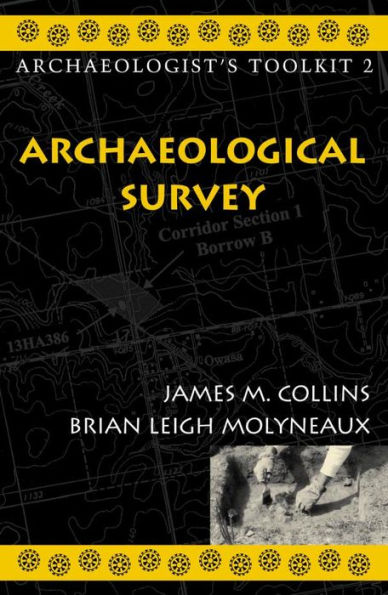Two longtime fieldworkers offer mentors' advice on finding and mapping archaeological sites. They outline the logic behind field surveying and the various designs used for survey projects. Recognizing that logistical issues—like schedule, budget, and equipment—are equally important to complete the job, particularly in a cultural resource management context, the authors also guide new professionals through the practical details of their work. The volume also ranges through the legal and ethical context of fieldwork and the various geophysical methods available for non-intrusive surveying. As a handy guide for novices, or a text for students and field schools, Collins and Molyneaux's book will be the place to start.
"1120880610"
Archaeological Survey
Two longtime fieldworkers offer mentors' advice on finding and mapping archaeological sites. They outline the logic behind field surveying and the various designs used for survey projects. Recognizing that logistical issues—like schedule, budget, and equipment—are equally important to complete the job, particularly in a cultural resource management context, the authors also guide new professionals through the practical details of their work. The volume also ranges through the legal and ethical context of fieldwork and the various geophysical methods available for non-intrusive surveying. As a handy guide for novices, or a text for students and field schools, Collins and Molyneaux's book will be the place to start.
41.5
In Stock
5
1

Archaeological Survey
200
Archaeological Survey
200Related collections and offers
41.5
In Stock

Product Details
| ISBN-13: | 9780759116221 |
|---|---|
| Publisher: | AltaMira Press |
| Publication date: | 04/16/2003 |
| Series: | Archaeologist's Toolkit , #2 |
| Sold by: | Barnes & Noble |
| Format: | eBook |
| Pages: | 200 |
| File size: | 8 MB |
From the B&N Reads Blog
